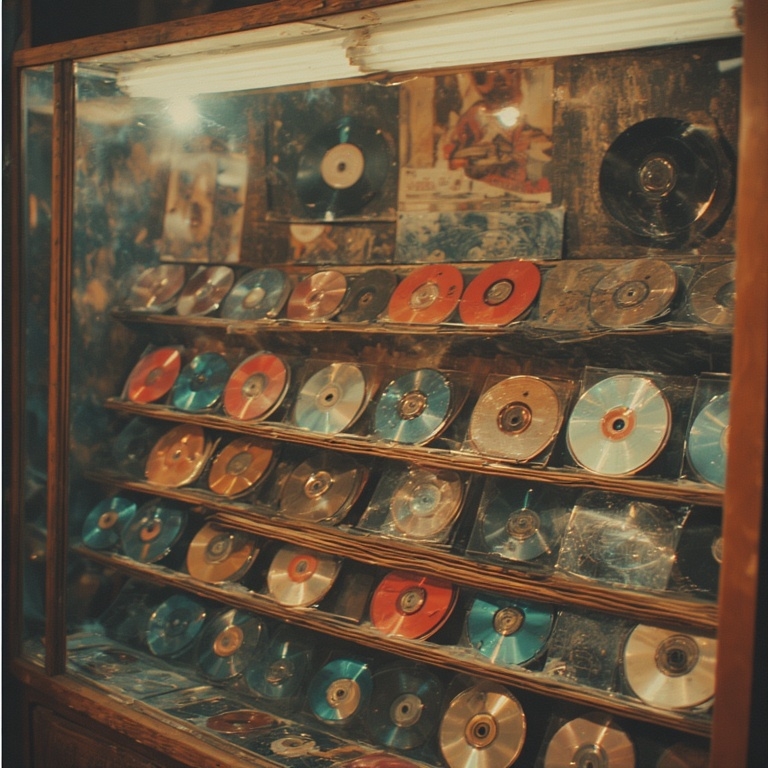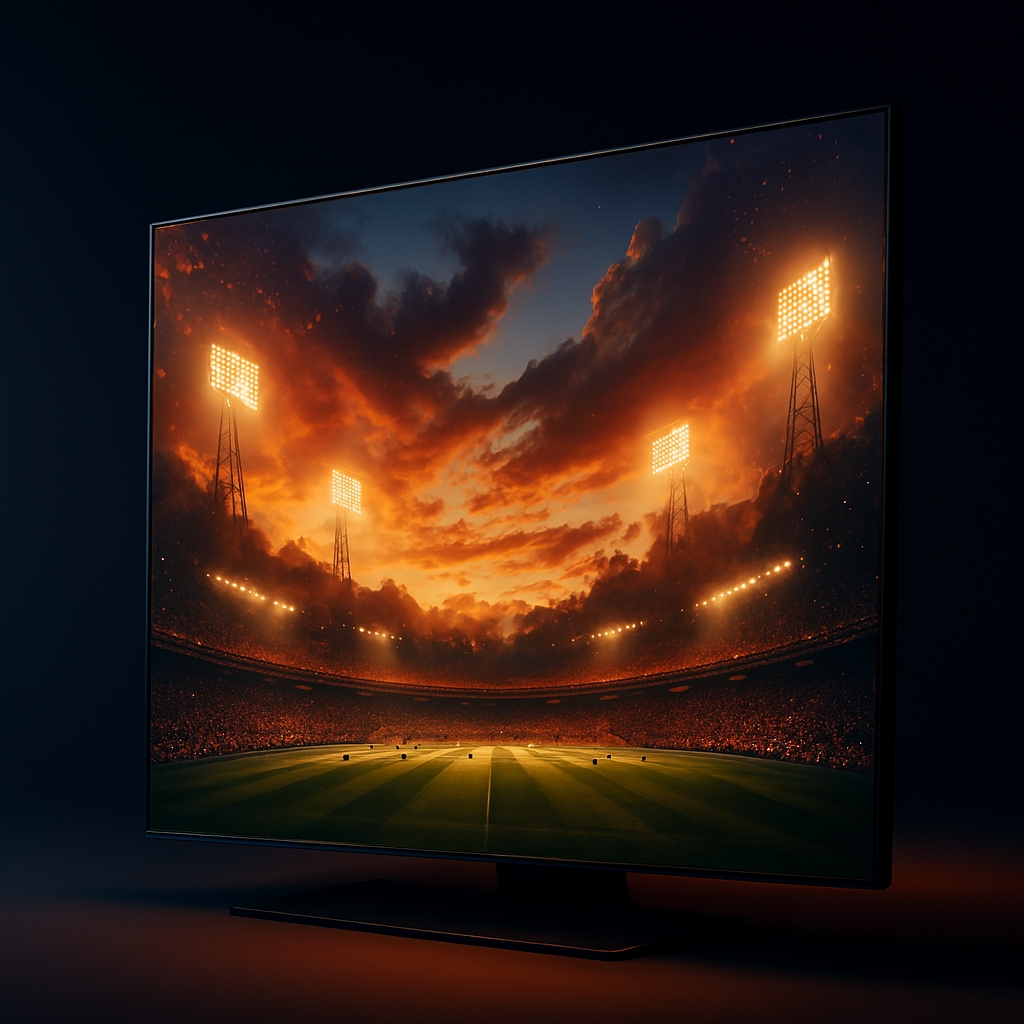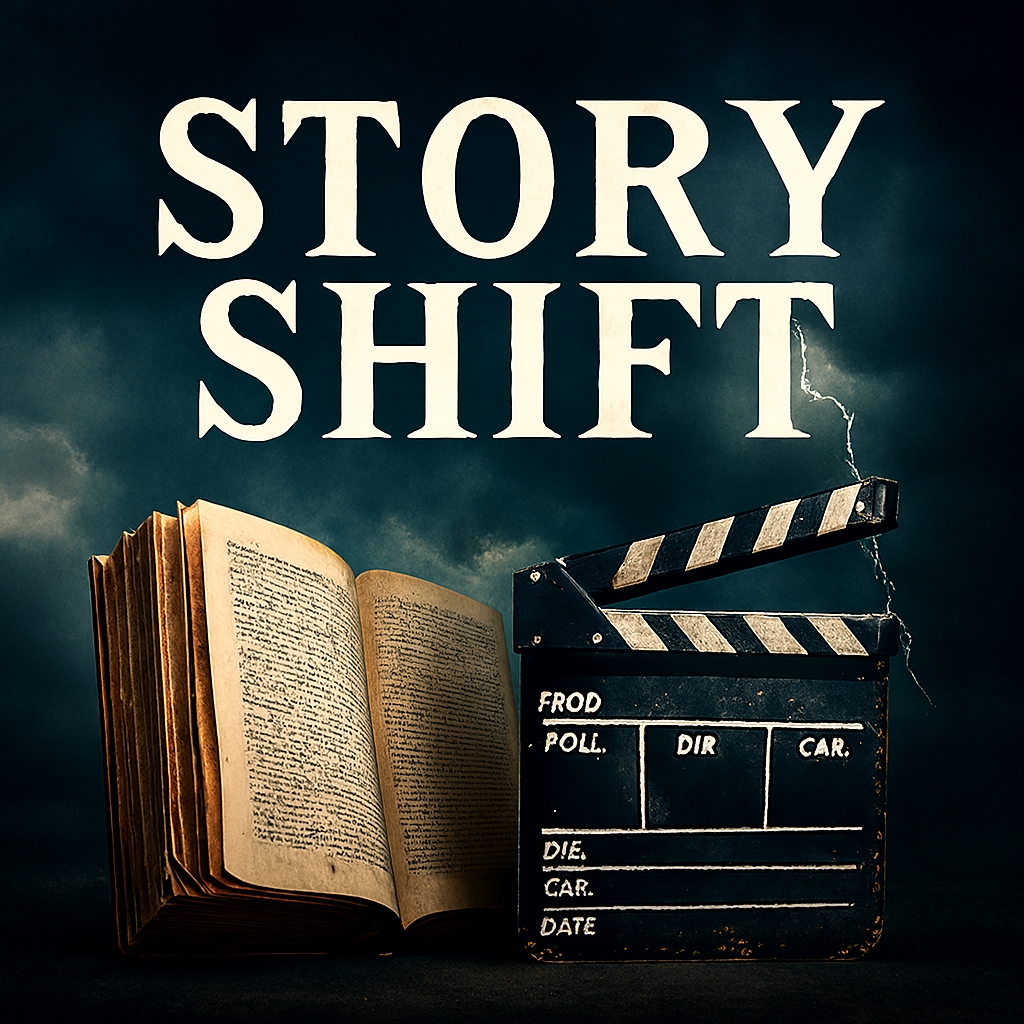The Illusion of Media Convenience
The Reality of Compression
Streaming has transformed how we access media—offering instant gratification, algorithmic curation, and seamless integration across devices. But beneath this frictionless surface lies a persistent technical gap. Physical media, particularly Blu-ray and UHD discs, continue to outperform streaming in both visual and auditory fidelity. This isn’t a matter of nostalgia or collector culture—it’s a matter of measurable engineering constraints. From bitrate ceilings to codec compromises, streaming platforms are built around efficiency, not perfection. The infrastructure, compression logic, mastering workflows, and playback environments that shape what viewers actually see and hear. The goal isn’t to dismiss streaming—it’s to understand its boundaries. For creators, critics, and viewers alike, this is a forensic map of fidelity loss in the age of convenience.

Viewer Perception – Does the Average Audience Notice or Care
For most viewers, the difference between streaming and disc-based media is subtle—often imperceptible without a calibrated setup or side-by-side comparison. On a typical living room TV, compressed video may appear “good enough,” and lossy audio may still convey the emotional tone of a scene. The convenience of streaming—instant access, cross-device compatibility, and algorithmic recommendations—often outweighs concerns about fidelity. But this doesn’t mean the compromises are irrelevant. Over time, the cumulative effect of compression, reduced color depth, and flattened audio can shape how stories are experienced and remembered. Emotional nuance may be dulled, visual symbolism may lose clarity, and sound design may become generic. For creators, this matters deeply—because every detail is intentional. For viewers, it’s a question of perceptual threshold. Some may never notice the missing shadows in a gradient or the softened echo in a cathedral scene. Others—especially those attuned to cinematic language—may feel something is off, even if they can’t articulate why. The average viewer may not worry about fidelity—but they are still affected by it. Quality shapes immersion, and immersion shapes meaning. Whether consciously or subconsciously, the limitations of streaming leave a trace.
Bitrate – The Backbone of Quality
Bitrate is the raw data rate at which video and audio are transmitted—measured in megabits per second (Mbps). It directly determines how much detail, texture, and nuance can be preserved during playback. Blu-ray discs typically deliver video at bitrates up to 40 Mbps, while UHD Blu-ray can reach 100 Mbps or more. In contrast, most streaming services operate between 5 and 25 Mbps, depending on the platform, device, and network conditions. This disparity is not cosmetic—it’s foundational. Lower bitrates force aggressive compression, which introduces visible artifacts like macroblocking, banding, and motion blur. Audio suffers similarly, with discs supporting lossless formats such as DTS-HD Master Audio and Dolby TrueHD, while streaming often relies on lossy codecs like Dolby Digital Plus. These compressed formats discard audio data to conserve bandwidth, flattening dynamic range and spatial accuracy. Bitrate isn’t just a technical metric—it’s the threshold between immersion and compromise.

Compression Algorithms – Tradeoffs in Fidelity
Compression is the cornerstone of streaming efficiency—but it’s also the root of its limitations. Codecs like H.264 (AVC) and H.265 (HEVC) are designed to reduce file sizes by identifying and discarding data deemed redundant or imperceptible. This process is inherently lossy, especially at lower bitrates. Visual compression introduces macroblocking in high-motion scenes, color banding in gradients, and a general softening of fine detail. Audio compression removes subtle spatial cues, ambient textures, and harmonic richness. Even with advanced codecs, streaming must balance quality against bandwidth constraints, device compatibility, and real-time delivery. Discs, by contrast, use less aggressive compression and are mastered with higher fidelity targets. The result is a cleaner, more accurate representation of the original source. Compression is not a flaw—it’s a compromise. But its impact on fidelity is undeniable.
Color Depth and Chroma Subsampling – The Loss of Visual Nuance
Color depth refers to the number of bits used to represent each pixel’s color information. Most streaming platforms deliver content in 8-bit color, which allows for 256 shades per channel. Discs often support 10-bit color, enabling over 1,000 shades per channel and significantly smoother gradients. Chroma subsampling further affects color fidelity. Streaming typically uses 4:2:0 subsampling, which discards three-quarters of the color data to reduce file size. Discs may use 4:2:2 or even 4:4:4 subsampling, preserving full color resolution. These differences manifest in subtle but important ways—skin tones appear more lifelike, shadows retain depth, and transitions between colors are smoother. On large screens or calibrated displays, the limitations of streaming become glaring. Color depth and chroma subsampling are not just technical choices—they shape the emotional and aesthetic impact of every frame.
Audio Fidelity – Lossless vs. Compressed Soundscapes
Audio is often the most overlooked aspect of streaming limitations. Blu-ray and UHD discs support lossless audio formats that preserve every detail of the original mix. These include DTS-HD Master Audio, Dolby TrueHD, and LPCM, which retain full dynamic range, spatial accuracy, and tonal richness. Streaming platforms, constrained by bandwidth and device variability, typically use lossy formats like Dolby Digital Plus. These codecs discard audio data to reduce file size, resulting in flattened dynamics, reduced clarity, and diminished immersion. Even when streaming supports Dolby Atmos, the implementation is often lower bitrate and less precise than disc-based versions. The difference is especially noticeable in quiet scenes, ambient sound design, and musical scores. Audio fidelity is not just about loudness—it’s about emotional resonance. Discs deliver the full soundscape—streaming delivers a compressed echo.

Buffering and Adaptive Streaming – Quality in Flux
Streaming relies on adaptive bitrate technology, which adjusts video and audio quality in real time based on network conditions. This prevents buffering but introduces variability in fidelity. During peak usage or network congestion, streaming platforms may reduce resolution, frame rate, or audio quality to maintain playback continuity. These changes are often imperceptible in casual viewing but degrade the overall experience. Discs, by contrast, offer consistent quality from start to finish, unaffected by external conditions. Buffering also introduces latency, especially in live or interactive content. ISP throttling, device limitations, and Wi-Fi interference all contribute to streaming instability. Adaptive streaming prioritizes continuity over consistency—smooth playback over perfect fidelity. It’s a pragmatic solution, but one that sacrifices the integrity of the original media.
Mastering Differences – Source Quality Matters
The quality of a media file begins long before playback—it starts in the mastering process. Discs are often mastered from high-resolution sources with dedicated attention to encoding, color grading, and audio mixing. Streaming versions may be derived from lower-quality masters optimized for speed and compatibility. This affects resolution, color accuracy, and sound fidelity. Discs allow for multiple audio tracks, commentary, and extras—all in high fidelity. Streaming often omits these features or compresses them heavily. Mastering also influences subtitle accuracy, menu design, and chapter navigation. Discs offer a curated experience—streaming offers a simplified one. The difference is not just in playback—it’s in preparation. Source quality shapes every aspect of the final product.
Infrastructure Limitations – The Hidden Gatekeepers
Streaming depends on a vast and complex infrastructure, including content delivery networks (CDNs), local ISPs, and device firmware. These media systems introduce latency, bottlenecks, and variability. Discs bypass this entirely, relying only on the player and display. Infrastructure affects peak hours, regional availability, and codec support. Streaming quality can degrade during high traffic or in areas with limited bandwidth. ISP throttling and data caps further constrain streaming fidelity. Discs are immune to these variables, offering predictable performance regardless of external conditions. Infrastructure is the invisible gatekeeper of streaming quality. Until it evolves, limitations will persist.
Device Compatibility and Decoding – Fragmented Playback
Not all devices decode media streaming content equally. TVs, phones, and computers vary in codec support, color accuracy, and audio output. Streaming apps may downscale content, alter frame rates, or compress audio based on device specs. Firmware updates and app versions also affect playback. Discs rely on standardized players, ensuring consistent decoding and output. Compatibility affects not just resolution but the integrity of the entire experience. Fragmentation leads to unpredictable quality. Uniformity is essential for fidelity—and streaming lacks it.
Licensing and Regional Restrictions – The Limits of Access
Streaming content is governed by licensing agreements that affect availability, format, and quality. Titles may be removed, altered, or restricted based on region. These changes can affect resolution, audio tracks, and subtitle options. Discs, once purchased, offer full access regardless of licensing shifts. Streaming platforms may cap bitrates or switch codecs based on contractual obligations. The result is a shifting landscape of access and fidelity. Discs preserve the original release—streaming preserves the business model. Licensing is a hidden limiter of quality.

Archival Integrity – Preservation vs. Ephemerality
Discs serve as physical archives, preserving content in its mastered form. Streaming is ephemeral, subject to updates, removals, and degradation. Archival quality matters for preservation, education, and cultural continuity. Discs retain original mixes, aspect ratios, and extras. Streaming may alter or omit these over time. Archivists and collectors prefer discs for their stability and completeness. Streaming is convenient—but not archival. Integrity requires permanence—and discs provide it.
Visual Artifacts and Motion Handling – The Cost of Compression
Streaming introduces visual artifacts like macroblocking, banding, and judder—especially in high-motion scenes. These are caused by compression and limited bitrate. Discs handle motion more smoothly, preserving frame integrity and cinematic cadence. Fast action, explosions, and camera pans suffer most in streaming. Artifacts distract from immersion and degrade realism. Discs maintain cinematic motion and clarity. Artifact reduction is a key advantage of physical media. Streaming still struggles with motion fidelity.
HDR Implementation Variability – Contrast Without Consistency
High Dynamic Range AKA HDR enhances certain structures like contrast, brightness, and color depth to a higher viewing capacity to bring a larger spectrum of information. Discs implement HDR consistently, with full metadata and mastering. Streaming varies by platform, device, and title. Some services use static HDR, others dynamic, but consistency is lacking. Discs support Dolby Vision and HDR10+ with full fidelity. Streaming may downscale or omit HDR based on bandwidth. HDR is not just a checkbox—it’s a visual philosophy. Discs deliver it as intended—streaming often compromises it.
Audio Channel Separation – Spatial Integrity in Jeopardy
Surround sound formats rely on precise channel separation to create immersive, directional audio environments. Blu-ray and UHD discs support full 5.1, 7.1, and object-based audio formats like Dolby Atmos and DTS:X, preserving discrete channels for each speaker. This allows sound designers to place audio elements with pinpoint accuracy—dialogue in the center, ambient noise in the rear, and effects moving fluidly across the soundstage. Streaming platforms, constrained by bandwidth and device variability, often collapse these channels into compressed mixes. Even when Atmos is supported, the streamed version may use a reduced number of audio objects or lower bitrate encoding, resulting in less spatial clarity. The flattening of channel separation diminishes realism, especially in scenes with complex sound choreography. Discs maintain the integrity of the original mix, ensuring that every whisper, echo, and explosion lands exactly where intended. Streaming compromises this spatial architecture, turning immersive sound into a generalized wash.
User Control and Navigation – The Experience of Ownership
Physical media offers granular control over playback—chapter selection, multiple audio tracks, subtitle customization, and bonus features are all accessible without buffering or interface limitations. Discs often include director’s commentary, behind-the-scenes footage, and alternate cuts, enriching the viewer’s engagement with the content. Streaming platforms, by contrast, prioritize simplicity and speed over depth. Navigation is often limited to basic play/pause functions, with extras either omitted or buried in menus. Subtitle accuracy can vary, and audio track switching may be restricted or unavailable. Discs empower users to explore content on their own terms, while streaming enforces a linear, curated experience. This difference reflects a broader philosophical divide—discs treat media as a collectible artifact, streaming treats it as a transient service. Control is not just about convenience—it’s about agency. Discs offer it—streaming limits it.

Pros and Cons – Who Gains, Who Loses in the Fidelity Tradeoff
Streaming offers undeniable advantages—instant access to video or music media, portability, and convenience across devices. It eliminates physical storage, enables algorithmic discovery, and integrates seamlessly into modern digital ecosystems. For casual viewers, these benefits often outweigh concerns about fidelity. Watching a film on a phone during a commute or streaming a show on a tablet in bed prioritizes accessibility over precision. But these conveniences come with compromises. Compression reduces visual clarity and audio depth, adaptive streaming introduces inconsistency, and licensing restrictions limit access and permanence. Discs, while less convenient, preserve the full fidelity of the original media—lossless audio, uncompressed video, and stable playback unaffected by bandwidth or infrastructure. They also offer archival integrity, bonus content, and user control that streaming rarely matches.
The impact of these tradeoffs varies by audience. Filmmakers and sound designers are most affected—because their work is often degraded in translation. Archivists and collectors lose cultural permanence when streaming replaces physical formats. Audiophiles and home theater enthusiasts notice every artifact, every missing frequency, every flattened soundstage. Even educators and critics are affected—because fidelity shapes interpretation. Casual viewers may not consciously detect the loss, but they still experience a diluted version of the original intent. The emotional resonance, symbolic clarity, and immersive depth of a film or show are subtly eroded. In short, everyone is affected—some directly, others subliminally. The pros of streaming are real—but so are the costs. And those costs ripple outward, shaping how stories are told, remembered, and preserved.
The Future of Media Streaming – Evolution or Reinvention
Streaming is poised for dramatic transformation—but whether it will match or surpass disc-based fidelity depends on more than just codec upgrades. Emerging technologies like AV1 and VVC (Versatile Video Coding) promise better compression efficiency, allowing higher quality at lower bitrates. Cloud-based rendering and edge computing may reduce latency and improve adaptive streaming responsiveness. Infrastructure upgrades—such as widespread fiber deployment and 5G/6G networks—could raise the ceiling for bitrate delivery, enabling more consistent HDR and lossless audio. But technical improvements alone won’t solve the deeper limitations. Licensing fragmentation, device inconsistency, and platform-specific encoding practices still dilute quality. Even with perfect bandwidth, fidelity depends on mastering workflows, metadata integrity, and playback environments.
Symbolically, streaming may evolve into a hybrid model—where high-fidelity versions are reserved for premium tiers or local caching, while standard streams remain optimized for speed. AI-driven upscaling and dynamic encoding may bridge some gaps, but they won’t replace the original signal. For creators, this future demands new standards—where fidelity is not sacrificed for reach, and where digital convenience doesn’t erase artistic intent. For viewers, it may mean choosing between immediacy and immersion. The future of streaming isn’t just about better tech—it’s about ethical architecture. Will platforms prioritize fidelity, permanence, and creator control—or will they continue to optimize for volume and velocity? The answer will shape not just how we watch—but how we remember.
Conclusion – Fidelity Has a Physical Form
Streaming has democratized access to media, reshaping how we consume, share, and discover content. But in the pursuit of convenience, it has introduced a series of technical compromises that limit fidelity. From bitrate ceilings and compression artifacts to inconsistent HDR and flattened audio, the architecture of streaming is built around efficiency—not perfection. Discs, by contrast, remain the gold standard for audiovisual quality, offering consistent, lossless playback that honors the original creative intent. This isn’t a rejection of streaming—it’s a recognition of its boundaries. As infrastructure evolves and codecs improve, streaming may one day rival disc-based media. But for now, the physical format still holds the edge in delivering the full cinematic experience. Fidelity has a physical form—and it’s etched in polycarbonate.
Join the Discussion
Have you noticed the difference between streaming and disc playback in your own setup? Do you think streaming will ever fully match the fidelity of physical media—or is the gap structural and permanent?
#VideoFidelity #StreamingLimitations #BluRayVsStreaming #AudioCompression #HDRTruths #BitrateMatters #CinematicIntegrity #PhysicalMediaWins #LosslessAudio #ColorDepthExplained #ChromaSubsampling #MasteringMatters #ArchivalQuality #MotionArtifacts #UserControlInMedia







Leave a Reply